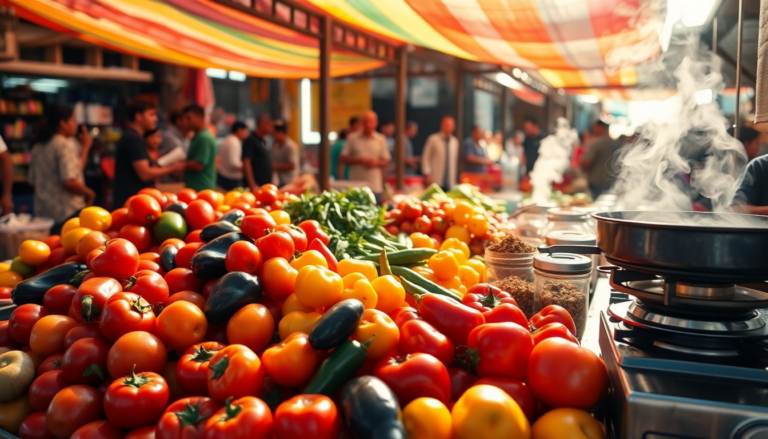Argomenti trattati
Imagine the aroma of spices wafting through the air, the vibrant colors of fresh produce at a local market, and the sounds of sizzling pans in a bustling kitchen. Traveling is not just about visiting new places; it’s an invitation to explore the world through its flavors. Each dish serves as a portal to a different culture, carrying with it stories of tradition and innovation. Have you ever considered how each bite you take can connect you to a rich history? In this article, we’ll delve into the essence of culinary travel and how it enriches our understanding of the world.
The Narrative Behind Global Ingredients
Behind every dish lies a rich tapestry of history and culture. Take, for instance, the humble tomato. Originating in the Andes, it has traveled across continents, becoming a staple in various cuisines, from Italian pasta sauces to Mexican salsas. This journey reflects not only the adaptability of the ingredient but also the stories of the people who cultivated and cherished it. As a chef, I’ve learned that the palate never lies; when you savor a dish, you are tasting the history of its components.
Moreover, the concept of terroir plays a significant role in culinary travel. Each region imparts its unique characteristics to the ingredients, shaped by the climate, soil, and traditional farming methods. For instance, the distinct flavor profile of a French cheese often stems from the specific grasses the cows graze on. Understanding these nuances allows us to appreciate the depth of flavors in our meals, encouraging a deeper connection with the food we consume.
Accessible Culinary Techniques
When traveling, one of the most enlightening experiences can be learning about local cooking techniques. Whether it’s mastering the art of fermenting vegetables in Korea or achieving the perfect al dente pasta in Italy, these skills can often seem daunting. However, as I’ve learned throughout my culinary journey, these techniques are grounded in simplicity and practice. For instance, fermentation—a method used for centuries—transforms basic ingredients into something extraordinary, enhancing flavors and preserving food.
Equipped with these accessible methods, home cooks can recreate global dishes, infusing their own stories and preferences. The key is to embrace experimentation and adapt recipes to suit local ingredients, honoring both the tradition and your personal touch. As a food writer, I find joy in sharing these techniques, demystifying the cooking process, and inviting everyone to explore their culinary creativity. Are you ready to take your cooking to the next level?
Connecting with Tradition and Sustainability
In an age where globalization often overshadows local customs, culinary travel reminds us of the importance of sustainability and tradition. Many chefs and home cooks are now turning to short supply chains, sourcing ingredients from local farmers and markets. This not only supports the community but also ensures that we are consuming seasonal and fresh produce, which is essential for flavor integrity.
In Italy, for instance, the concept of ‘km 0’ encourages restaurants to use ingredients sourced within a short distance from their location, preserving the authenticity of regional dishes. By embracing such traditions, travelers can enjoy delicious meals while contributing to the preservation of culinary heritage. As I often say, behind every plate is a story waiting to be told, and every bite is a step toward sustainability.
So, as you embark on your next adventure, let the culinary stories of the places you visit guide your experience. Will you try new flavors, learn local techniques, and, most importantly, savor the journey? The world of food is vast and vibrant, waiting for you to explore its depths.

